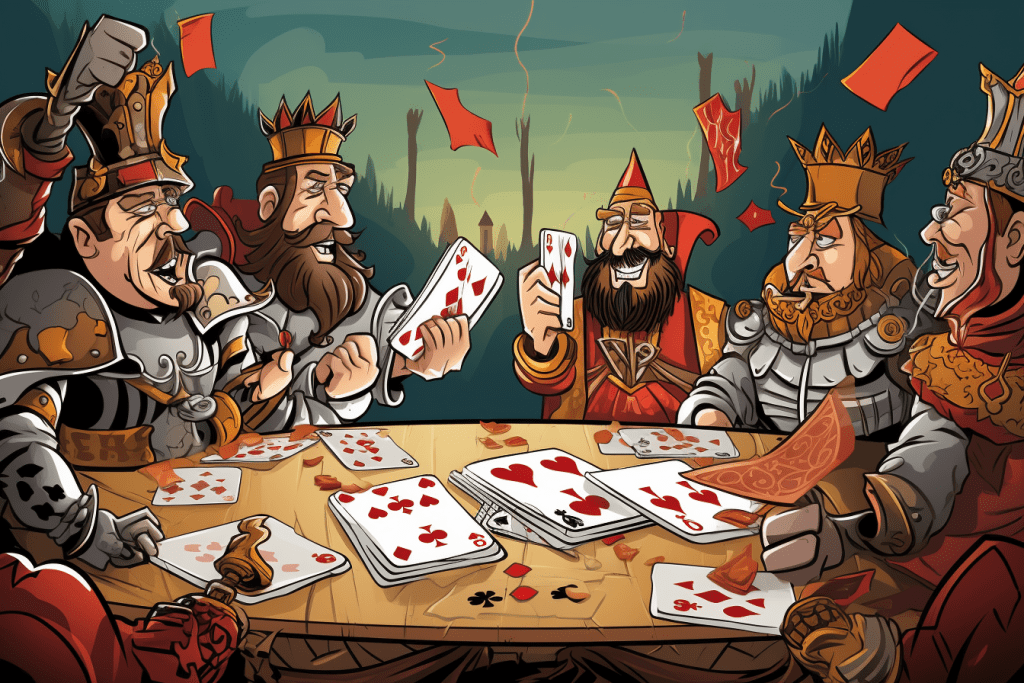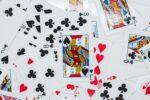This is WAR! An Epic Battle Playing Card Game for Family Fun!
War is a powerful word that evokes images of conflict, struggle, and battles. But in the realm of card games, War takes on a more playful and nostalgic tone, inviting players of all ages to engage in a friendly battle of cards and enjoy the thrill of chance and luck.
Hello, fellow card game enthusiasts! Today, we’re going to explore the delightful world of War, a classic card game that, for me, brings back fun memories of games around the campfire, or with my brothers in the ‘rec room’ during the Baby Boom of the 1950s – before computers! In this article, I’m going to share the gameplay, strategies, and the enduring charm of the card game known as War.
War has a fascinating history that dates back to its humble beginnings in Europe. Over time, it spread across the globe, capturing the hearts of players young and old. From family game nights to friendly gatherings, War has cemented its place as a beloved pastime worldwide. It’s simple, easy to learn, requires very little skill, and can be played by players of all ages from as young as 4 or 5 years old to grandparents.
If you’re new to the game or need a refresher, fear not! Playing War is as easy as shuffling a deck.
How to Play the Card Game War
Picture yourself seated at a table with a shuffled deck of standard playing cards in front of you. The rules of War are as simple as can be:
Deck Setup
Start by dividing the deck equally among all players. Each player keeps their cards face-down, creating their own War pile.
Note for parents: This could be a good opportunity for your younger child to practice cutting the deck, and you could even get them to deal out the entire deck if everyone has enough patience.
The Battle Begins
In each round, all players simultaneously reveal the top card from their war pile and places it to the side. The player with the highest-ranking card wins the round and collects all the revealed cards placing them face-down at the bottom of their pile. Note, the Jack, King and Queen cards are all worth 10.
Note for parents: This is an excellent game for younger children just learning the value of numbers. The numbered playing cards have ‘pips’ which, when counted, add up to the value of the card. For example, a three of hearts card will have three ‘heart pips’ in its center. The child counts the pips and so learns that 3 is a total of 3.
Resolving a Tie – War is declared!
In the event of a tie, a War is declared. Each player places three face-down cards on the table, followed by one face-up card. The player with the highest face-up card wins all the cards on the table. If these two cards also happen to tie, the process is repeated until a winner is determined. The victorious player collects all the cards on the table.
The Battle Continues
The rounds continue until one player holds all the cards, becoming the ultimate winner of the game. With just two players, this can go on for a long long long long – well, a long time. You can try to speed it up by making the ‘war’ piles larger – 5 cards, or 7.
Embrace the Element of Luck
In War, luck is the name of the game. Each round presents an opportunity for both triumph and defeat, adding an element of unpredictability that keeps players on their toes. Embrace the thrill of the unknown as you flip those cards and let destiny play its part.
Note to parents: Young children often have difficulty with luck, especially bad luck. But one of the beauties of War is that there is no skill involved. So a young child will have just as much chance at winning as an older child or even an adult.
War is also a game that teaches patience, for fortunes can shift from one round to the next. Whether you’re experiencing a winning streak or facing challenging battles, the game instills the virtues of resilience and grace, proving that the journey is just as rewarding as the destination.
Variations of War
If you’re craving a twist, War offers a realm of possibilities. Explore “Casualty War” or “Guerilla Joker” (played just like standard war except the jokers are used and hen a joker is played, no matter what the opposing card(s), you must go to war). You’ll find many variations on the Pagat Card Game website here.
For our curious learners and creative souls, there’s “Math War” where two cards are played at once and either added or subtracted to come up with a value – or Spelling War where cards are each given a letter value. These adaptations combine fun with education, making War a delightful learning experience for kids. Who knew learning could be this much fun?
And the ultimate war, for adults, is Casino War, a thrilling card game that brings the excitement of classic “War” to the casino floor. Played with standard 52-card decks, Casino War is a simple yet captivating game where players go head-to-head against the dealer. This is such a fascinating game we’ve dedicated an entire article to it – which you can read here.





